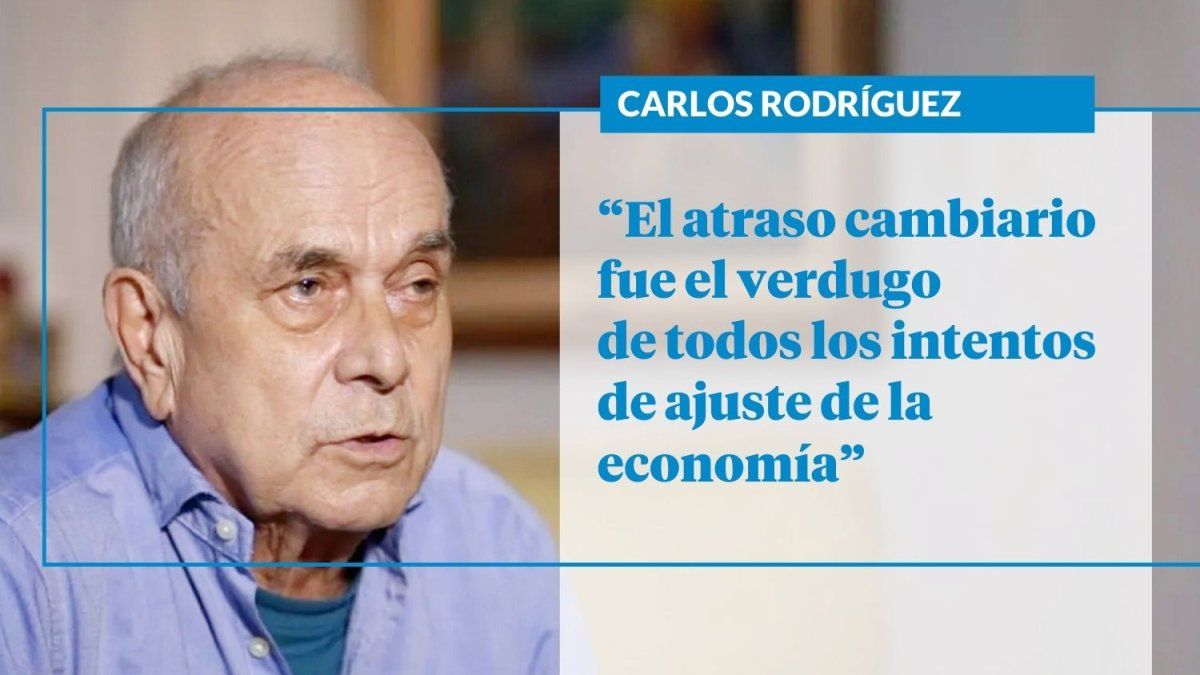The fiscal adjustment
The stabilization plan was initially based on a huge devaluation that raised the price of the dollar by 114%. This devaluation activated a transitory tax (PAIS) on purchases of foreign currency, liquefied income, retirements and other social expenses. In addition, public works and transfers to provinces were paralyzed.
Nominal government expenses were frozen amid the rise in inflation, which in December was 25.5%, which contributed to the temporary liquefaction of items. The liquefaction, together with the chainsaw, resulted in the almost immediate generation of a primary surplus in public accounts.
Central Bank of the Argentine Republic BCRA
The stabilization plan was initially based on a huge devaluation that raised the price of the dollar by 114%.
Mariano Fuchila
Although there are doubts about the political sustainability of the drastic initial adjustmentthe Government has continued fiscal adjustment through privatizations (ongoing) and the rationalization of public employment.
The remunerated debt from the BCRA was transferred to the Treasury in one fell swoop. The procedure, in simplified terms, was like this: BCRA rescued the Passes with issue and that issue was rescued by the Treasury with securities called LECAPS. He deposited those pesos in the Treasury account at the BCRA.
It could be said that LECAPS are a financial instrument copied from Islamic banking. The interest rate does not appear anywhere in public accounts. The interest is implicit in the redemption value of the security. LECAPS are served with more LECAPS, but that does not appear in the Treasury’s financial deficit. But it does increase public debt.
This accounting maneuver allows the Treasury to show a financial fiscal surplus. If the interest actually accrued by the LECAPS were computed, the Treasury has a financial deficit in 2024.
A commendable measure by the Government has been to stop the high inflation that we suffered at the end of 2023 and bring it to a level of around 2%/3%.
I believe that this achievement is due in large part to the significant reduction that they implemented in the Monetary Policy Rate. For decades I have been writing that the inflation rate in Argentina is largely determined by the interest rate on the BCRA’s remunerated liabilities, which determines the rate of liquidity expansion.
A very important achievement of the Government has been the enormity of changes in microeconomic regulations that prevented the normal functioning of the markets.
In addition to the Hojarasca law, which eliminates hundreds of regulations outdated by time and disuse, significant changes are announced daily in the structure of the State and regulatory framework.
VAT was generalized and the AFIP was rationalized, dividing it again into DGI and DNA, which made it possible to eliminate bonuses tied to collection and also several thousand unnecessary positions. They also carried out clearly protectionist procedures at Customs.
“Micro” deregulatory reforms continue at an accelerated pace. Ending the monopolies of Correo Argentino, Intercargo and allowing “open skies” are just three of them…
Retirements, after the drastic reduction they had in the first months, have recovered and somewhat exceed the level of November 2023. This implies that the tax savings that the retirement saw of the first months implied will not be there in 2025. Nor will the Tax Country, which has been an important source of tax revenue.
Exchange rate policy and the two “convergences”
100 dollars

The exchange rate delay is evident, and is incompatible with what should come at the end of the entire adjustment.
Inflation of 2.7% in October has been a truly important achievement. It is reaching the Convergence of Variation Rates. In other words, inflation reaches the level of the (exogenous) devaluation rate plus international devaluation.
The drop in inflation was possible due to the large decrease in the BCRA’s interest rate, and the fiscal adjustment (saw), which made possible the virtual elimination of the monetary issue.
However, inflation rates have been higher than the plan’s constant 2% devaluation rate. The convergence of variation rates It is being achieved at the cost of a significant drop in the level of the Real Exchange Rate. (TRC)
It is now necessary to obtain the convergence of the CRT level. For this, within the implemented system, inflation should be less than the devaluation (plus international inflation) for sufficient time and amounts, so that the Convergence of Levels.
Minister Martínez de Hoz, in his December 1978 plan that in practice lasted until December 1980, finally achieved Rate Convergence at the cost of an enormous exchange rate delay. The small devaluation of January 1981 (10%) only generated distrust and capital outflow. When the new minister Sigaut took office in March 1981, the market estimated an exchange rate delay of 30%. Sigaut abandoned Tablita and resorted to the traditional macrodevaluation. It started with a 30% rate that only generated more runs and greater inflation. After repeated devaluations, all of which failed, the government fell at the end of the year. The rest is history.
There is no doubt that throughout 2024, Argentina has become an expensive country. As there are multiple exchange rates and exchange control that statement depends on the exchange rate used. The reality is that the government supplies dollars to outbound tourism through the Card Dollar of $1,600 (it only sells, not buys), while the commercial dollar supported with Cepo is $1,000 with withholdings, country tax and other sweeteners.
The free dollar has fallen significantly in recent months, as a result of the laundering implemented and an important “xarry trade.” The “carry trade” decreases the demand for dollars when it is armed and increases it when it is disarmed.
There has also been a large drop in the country risk premium. The funds required to service the January 2025 Sovereign Bond maturities were deposited early in NY. A smart move that pleased the financial markets. Of course, the amortization funds do not come from a financial surplus, which there is none, but from the issuance of LECAP securities that cost much more in pesos than the 2% rate that the dollar rises.
One fact not to forget is that the real economy continues with the negative trend that began in the previous government. The Trend-Cycle Index of the global activity level, the EMAE presents until August (latest data) 25 consecutive months of monthly falls (m/m).
Beyond my distrust about the sustainability of the fiscal adjustment and the problems of the real economy, it is obvious that the markets have blessed the government’s fiscal, exchange and financial policies with a drop in country risk from 1900 bpp to the current 750 bpp at mid-November.
Conclusion
The exchange rate delay has until now been the executioner of all attempts to adjust the economy. This happens because governments insist on first lowering inflation using exchange rate policy, before making the necessary structural reforms to support the exchange rate restriction. I believe that the correct thing is to float, remove the BC from the financial market, issue as little as possible and make structural reforms in the fiscal, labor and regulatory areas.
If politics does not allow these reforms, fixing the exchange rate and resorting to Cepo, Carry Trade or external loans is to maintain an unviable economy and postpone an inevitable and recurring crisis. That has been the Argentine experience of the last hundred years.
This Government is doing good work in regulatory matters, but I do not see sustainable and efficient reforms in the fiscal, exchange and labor areas.
The exchange rate delay is evident, and is incompatible with what should come at the end of the entire adjustment: commercial opening. The priorities that a sustainable stabilization plan with structural adjustment should have have been reversed. All that remains is to wait. The cards are cast. There is one year left until the midterm elections. We are also approaching the first year of the government.
As it has always been said: a year is an eternity in Argentina.
Academic and economist
Source: Ambito




